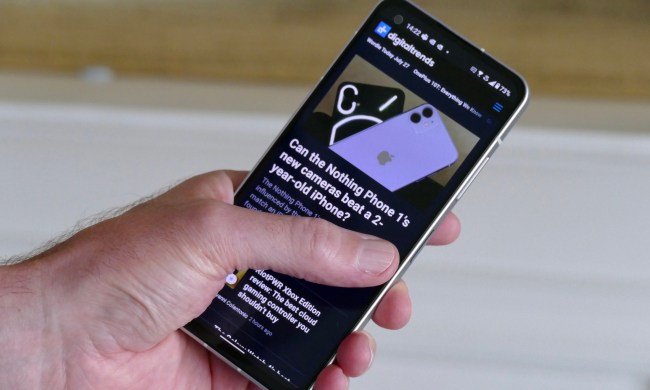Huawei puts cool pressure sensitive screen technology on a smartphone, then won’t tell us when we can buy it or how much it’ll cost.
Huawei’s being a great big tease. Its new Mate S has a very cool feature you’ve never seen on a smartphone before. The only problem is, you can’t buy it yet, and the company’s not saying when you’ll be able to — or crucially — how much it’ll cost when it does eventually arrive.
The special tech is not called Force Touch, but that’s exactly what it is — Huawei’s using the same variable pressure touch system seen on the Apple Watch, but this time, it’s built into a phone screen. Force Touch is the big feature expected to headline the launch of the iPhone 6S and 6S Plus, and Huawei’s stolen Apple’s thunder.
Well, it did right up until it was revealed the Force Touch feature would only be found on the 128GB version of the Mate S, which hasn’t been given a release date yet. The regular 32GB and 64GB Mate S will be out soon, and cost 650 and 700 euros respectively. The 128GB model may end up being closer to 800 euros, which is a lot for a Huawei device. The extra storage is nice, but is Force Touch on the phone a feature you’ll want?
Gimmicky, but cool
At the moment, the pressure sensitive screen is good for a few things. View a picture and press down harder on the screen to show a magnified area of the image, and the magnification changes depending on the amount of pressure. The base of the phone’s body can be used to navigate through pages and screens, using varying pressure levels. It’s a feature Huawei called Magic Bottom — a decision that was clearly taken on the marketing team’s day off. Finally, the screen can even be used to weigh lightweight objects.
If it sounds like Huawei has a feature it doesn’t quite know how to exploit, you’re right. During its press conference, there was a plea for developers and Huawei fans alike to submit ideas on what the pressure sensitive display could be made to do. Trying the feature out, it worked well — magnifying some pictures, and weighing a handy bottle of water — but we couldn’t envision using either feature more than a few times.
Apple uses Force Touch to access hidden menus and options on a small-screen device, where it works well, and ends up being used fairly often. On the Mate S, the feature doesn’t currently offer useful functionality. It’s a gimmick. However, it is a cool gimmick, which could transform into something handy in the future. We just don’t know what yet.
Strong specs and a sleek design
Luckily, Force Touch is not the only feature that makes the Mate S an interesting device. The multi-function fingerprint sensor is helpful, and can be used to raise or lower the notification center, snap a selfie, or scroll through open webpages. It’s also standard on all the Mate S models, not just the most expensive one.
Force Touch is not the only feature that makes the Mate S an interesting device.
The water resistant nano-coating gives the Mate S more protection than many other high-price flagship phones, while the soft lighting flash next to the 8-megapixel selfie cam is an on-trend addition that’ll please many people.
The device itself is a beauty. Huawei has continued to improve on the stylish design it introduced with the P8, and refined it in certain areas to make the look more cohesive and attractive on the Mate S. The plastic inserts for the antenna are shaded to match the aluminum body, for example. It’s slim, light, and comfortable to hold, despite the large 5.5-inch display.
However, if it’s the Force Touch technology that’s got you interested, you’ll have to be patient and willing to spend plenty of money to secure a Mate S with that feature onboard. Pre-orders for the 32GB and 64GB model start in several countries including the UK on September 15 through Huawei’s own Vmall online store. The 128GB phone with cool pressure sensitive screen? We’ve got to wait and see.
Highs
- Pressure sensitive screen
- Multi-function fingerprint sensor
- Stylish, good build quality
Lows
- No release date for 128GB Force Touch model
- Expensive
- Gimmicky





